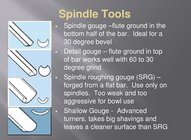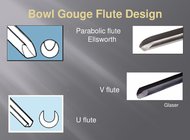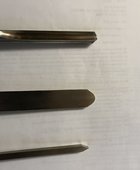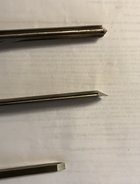I just got my Rikon 70-220VSR set up last night and am keen to try it out.
It came with some tools, specifically:
Henry Taylor 1" spindle gouge
Henry Taylor 3/4" parting tool
Henry Taylor 3/4" skew chisel
Henry Taylor 3/8" spindle or bowl gouge (not sure how to tell the difference...)
Robert Sorby 3/4" round scraper
Henry Taylor 1/4" spindle or bowl gouge (again not sure how to tell the difference)
Henry Taylor 1/4" v-groove chisel. (this has a square shank and terminates in a perfect V shape)
I'm looking to try some spindle work and eventually try my hand at a bowls but I'm not sure if I have the right tooling.
I can post pics if that helps.
It came with some tools, specifically:
Henry Taylor 1" spindle gouge
Henry Taylor 3/4" parting tool
Henry Taylor 3/4" skew chisel
Henry Taylor 3/8" spindle or bowl gouge (not sure how to tell the difference...)
Robert Sorby 3/4" round scraper
Henry Taylor 1/4" spindle or bowl gouge (again not sure how to tell the difference)
Henry Taylor 1/4" v-groove chisel. (this has a square shank and terminates in a perfect V shape)
I'm looking to try some spindle work and eventually try my hand at a bowls but I'm not sure if I have the right tooling.
I can post pics if that helps.




